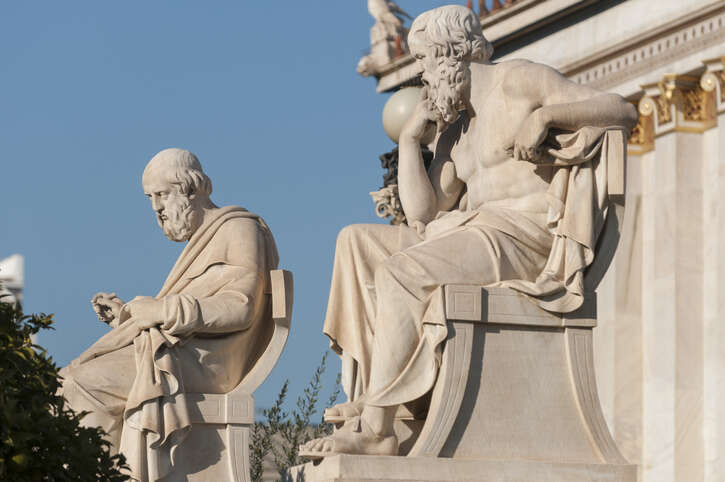
The weather? Here in Languedoc, it must have rained heavily at the close of November 2012, since the photographs I took in early December show my sons hurling small, windsnapped branches into the swollen River Hérault. There will have been gathering darkness at the days’ end, of course, as the northern half of this tilting planet leaned out toward the rest of the universe, dragging night into our lives like a sleeper groping for a misplaced blanket.
Other photos tell me that I was in Burgundy in mid-November. Here’s a dreary picture of Romanée-Conti: mute, drab, brown, gray, snuffed in mist, lifeless. You can see the top of the stone cross, but not much farther. My fellow gawpers are all wearing woolly hats and scarves. If it wasn’t for the masonry, it could be the Marmandais.
No wonder I came home and ordered (my records tell me) nine bottles of Madiran. Three were the 2009 Prestige from Château Viella; three were the 2010 Vieilles Vignes from Labranche Laffont; and three were this wine. They cost about €13 per bottle, delivered by the end of that month, and I’ve made no better wine purchase over the past six years. They arrived, sat in the rack, gathered a bit of dust, got jostled from time to time, watched life unfold around them. Every time I pulled out a bottle, though, it came good: dark, dense, deep, and dependable. This was the last survivor, drunk on January 2, 2016: wonderful wine.
A wine for all seasons
It’s not actually obligatory to drink Madiran in winter. It can inspire in spring; Keep going, it seems to say, don’t give up, everything will be worth the effort. In summer, by contrast, served with a light chill, it acts more as a memento mori: black, forbidding, as shocking as the skull on the desk, incongruous yet illuminating, reminding the drinker (as no rosé ever can) that life will soon become much more difficult. Sensually speaking, it most perfectly echoes autumn, mimicking the aromatic messiness and textural litter of the natural world as everything sets about falling and decaying, while humans attempt to scold a little order into the scene with flame and smoke. But winter, it’s true, is when Madiran performs best. Then it’s the antidote: to cold, to drained light, to exhaustion, to the fear that there will be no return, to the terror inspired by the indifferent stars. No red wine is more consoling, more reassuring, more fortifying. It will brace your struts and buttress your walls. The brute of a wine is at its most humane and giving in winter. It’s a candle with a flame of blood. It’s a life force, liquefied.
A small formality, by the way: Madiran requires you to think ahead. This was good wine on the day I opened it, but it was a great wine the day after. I’ve never had a Madiran that wasn’t better with 24 hours of air. The tannins don’t exactly soften, but they then find a harmony and equilibrium with the insistent acidity. The wine grows in articulacy; it makes more sense; it works in the manner intended. Shortly after opening, a bottle of Madiran is like a stored tent, stuffed tightly into a bag, its poles and canvas all there in economical but senseless disorder. By day two, the elastic inside the poles has jolted them into shape, the canvas forms a little home, and the guys are pegged taut enough to keep the wind at bay.
And now a confession: I didn’t make a tasting note. I didn’t think I was going to need to; it wasn’t meant to be that good a bottle. Only later did I realize that this wine had, after all, been an event in my life, but by then it was too late to hymn its parts. “I’ll be surprised if there’s a wine I actually enjoy more than this all year,” I jotted retrospectively, hunting about for an adjective or two. “Freshly opened, very good; the day after, fantastical. The dark countryside and soul warmth in a glass. Splendid purity, depth, and balance. Get a case of the ’15.” That’s it.
Here’s another Madiran note, slightly edited this time, from a wine I tasted in the autumn of 2015. “Startlingly dark: saturated black-red. Earthy, warm, some lingering oak sweetness but balanced now, with plum fruits and drifting savory smoke: very classic. On the palate, youthful and intense: tight, taut, close-grained, with splendid tannic depths. The vivid acidity is in balance; rich fruits command the central palate. Powerful, searching, perfumed, textured, and authoritative.” That was another wine that left me enraptured—and another wine that improved on day two. A more expensive Madiran; this time, however; I had been given it: the 2002 Château Montus Cuvée Prestige. What I’d point out, though, is that these magnificent wines seem to disdain the passing of the years; the 2010 and 2002 seemed almost coevals, and both were unquestionably still “young.”
This sumptuous journal, I know, is read by one-percenters who can still afford to buy classed-growth Bordeaux and grand cru Burgundy and who have magnificent cellars where tissue- wrapped bottles idle away the decades?in cool tranquillity. But, fortunate readers, you’re all human beings, too; you must have your low moments, your winter discontent, your nocturnal frights, your intimations of mortality. May I recommend a few bottles of Madiran?




